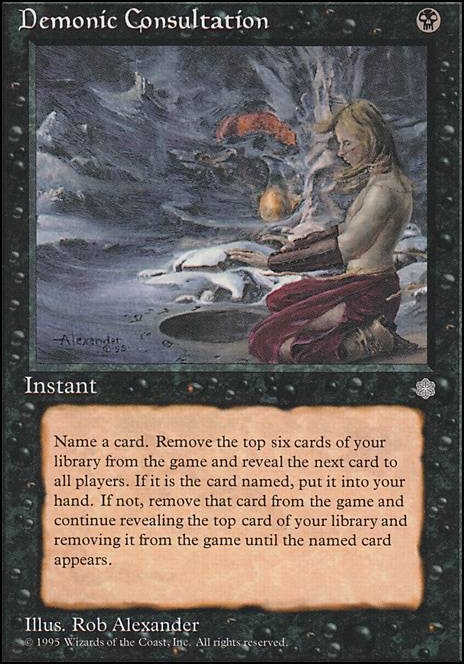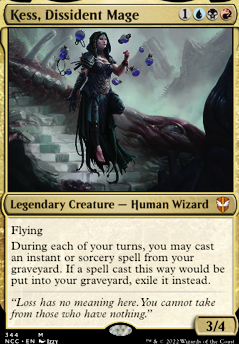Land (31)
- 1x Ancient Tomb
- 1x Arid Mesa
- 1x Badlands
-
1x
Blood Crypt

- 1x Bloodstained Mire
- 1x Cephalid Coliseum
- 1x City of Brass
- 1x Command Tower
- 1x Flooded Strand
- 1x Forbidden Orchard
- 1x Gemstone Caverns
- 1x Island
- 1x Mana Confluence
- 1x Marsh Flats
- 1x Misty Rainforest
- 1x Polluted Delta
- 1x Scalding Tarn
- 1x Shivan Reef
- 1x Snow-Covered Island
- 1x Snow-Covered Swamp
-
1x
Steam Vents

- 1x Sulfurous Springs
- 1x Swamp
- 1x Tarnished Citadel
- 1x Underground River
- 1x Underground Sea
- 1x Urborg, Tomb of Yawgmoth
- 1x Verdant Catacombs
- 1x Volcanic Island
-
1x
Watery Grave

- 1x Wooded Foothills
Creature (8)
Instant (25)
- 1x Brainstorm
- 1x Cabal Ritual
- 1x Chain of Vapor
- 1x Counterspell
- 1x Cyclonic Rift
- 1x Dark Ritual
- 1x Delay
- 1x Demonic Consultation
- 1x Dispel
- 1x Entomb
- 1x Fire Covenant
- 1x Force of Will
- 1x Frantic Search
- 1x Intuition
- 1x Lim-Dul's Vault
- 1x Mana Drain
- 1x Mental Misstep
- 1x Mystical Tutor
- 1x Negate
- 1x Pact of Negation
- 1x Pyroblast
- 1x Red Elemental Blast
- 1x Swan Song
- 1x Tainted Pact
- 1x Vampiric Tutor
Artifact (11)
Commander (1)
Sorcery (19)
- 1x Buried Alive
- 1x By Force
- 1x Careful Study
- 1x Dark Petition
- 1x Demonic Tutor
-
1x
Exhume

- 1x Faithless Looting
- 1x Gamble
- 1x Gitaxian Probe
- 1x Imperial Seal
- 1x Ponder
- 1x Preordain
- 1x Reanimate
- 1x Timetwister
- 1x Toxic Deluge
- 1x Victimize
- 1x Wheel of Fortune
- 1x Windfall
- 1x Yawgmoth's Will
Enchantment (5)
Suggestions
Updates Add
Comments
Attention! Complete Comment Tutorial! This annoying message will go away once you do!
Important! Formatting tips — Comment Tutorial — markdown syntax
Please login to comment
| Date added | 6 years |
| Last updated | 5 years |
| Legality | This deck is not Commander / EDH legal. |
| Rarity (main - side) | 14 - 0 Mythic Rares 45 - 0 Rares 23 - 0 Uncommons 14 - 0 Commons |
| Cards | 100 |
| Avg. CMC | 2.17 |
| Tokens | Bird 2/2 U, Copy Clone, Spirit 1/1 C |
| Folders | EDH, Competitive EDH, 1 Tierlist, Commander, cEDH, EDH, others decks i find interesting, To build, Sweet Shit, Resources |
| Votes | |
| Ignored suggestions | |
| Shared with | |
| Views |


